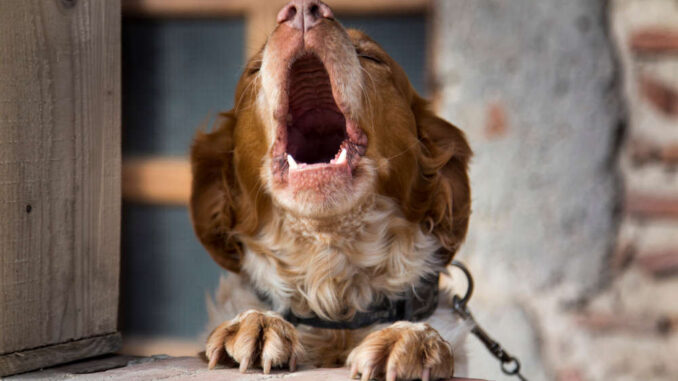
Seeing our pet in pain is a harrowing experience. On a day to day basis, I see dogs in mild, chronic pain every day. These are dogs who have conditions such as ongoing joint disease or dental pain. Much less commonly, I encounter a dog that is in so much pain they will yelp.
Understandably, owners will be very worried if their dog is yelping in pain and they’ll want to know why this is happening and how they can resolve it ASAP. As a vet, my job is to determine the cause of pain and provide treatment right away, to get that dog comfortable.
What does yelping mean in dogs?
Dogs have limited means of communication and they can yelp to express to us that something is wrong. As a domesticated animal, this is a really useful characteristic. They’re asking for our attention and help, and making it obvious to all around that something is amiss.
For some dogs, this can be an almost involuntary reaction to an acute and severe pain. For example, a dog may suddenly yelp if they rupture the cruciate ligament in their knee when running, or if they are chewing on a stone and fracture their tooth. Much less commonly, we see yelping when a dog is in chronic pain. Those with ongoing disease (like arthritis), tend to soldier on quietly, not yelping or making any noise.
What to do when your dog yelps in pain
If you hear your dog suddenly yelp, try to assess what is going on. For example, could they have trodden on something? Your dog will usually provide some clues as to the source of pain. This may be e.g. a limp, licking at a particular spot or tensing their abdomen.
Whenever possible, try to help your dog. This can mean removing a thorn in their paw or carrying a small dog who is struggling to stand.
Once you’ve done all you can for your dog, contact your local vet to book an urgent appointment. This way, your pet can get a full check over and can be started on any pain relief needed. Remember, if your regular vet is closed, they should have a local emergency vet available nearby.
Top causes of yelping in dogs
As mentioned, yelping tends to indicate an acute pain, rather than a chronic one. This pain will be intense and severe and will come on suddenly.
1. Standing on something painful
While dogs have thick pads and can stand on most surfaces without pain, standing on a sharp stone or piece of glass can cause them to yelp. Dogs may suddenly go lame and start to lick or chew at their paw. Owners should assess the paw and try and remove anything stuck in the pad, washing the paw with salt water after. If the object cannot be removed or if it has caused a laceration, a prompt vet visit is needed.
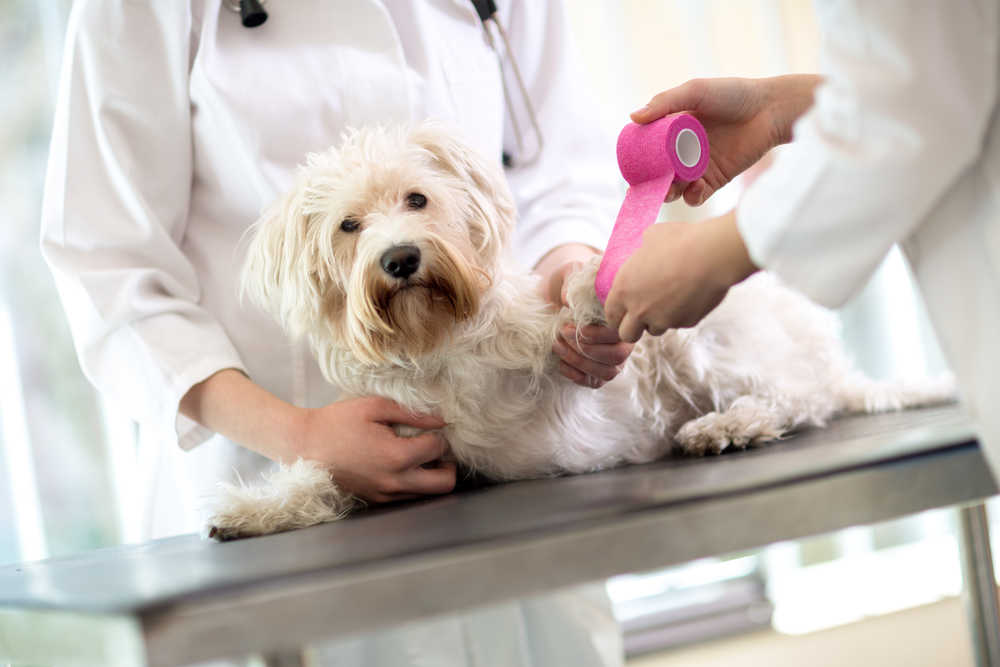
2. Broken claw
Claws can be quite fragile and may break if snagged on something or if pulled with force. The claw sometimes breaks right off, though sometimes it will splinter or split. Like with a foreign body in the pad, your dog will likely start licking the area soon after the injury.
Owners should bathe the claw with salt water and prevent licking with a buster collar.
A vet visit is required to remove any claw that remains and to provide some pain relief and antibiotics. If the claw is broken below the quick and there is no bleeding, vet treatment is not usually needed.
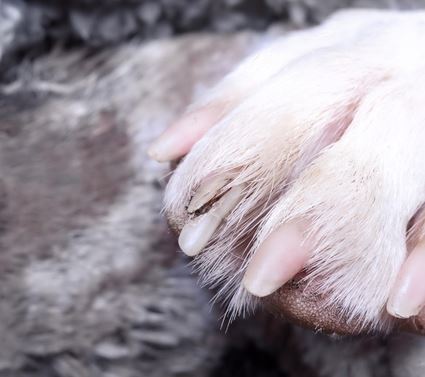
3. A foreign body in the ear
A dog who is in the garden in summer time, rolling about, that suddenly starts to yelp may well have a grass awn in their ear. After they yelp, you may also notice they are shaking their head and rubbing at their ear.
Usually the foreign object has lodged too far in for us to be able to remove it at home. A vet can do so in their clinic using an otoscope and long tweezers. The sooner we can remove these foreign bodies the better, as they cause intense discomfort and can lead to ear infections and ruptured ear drums.
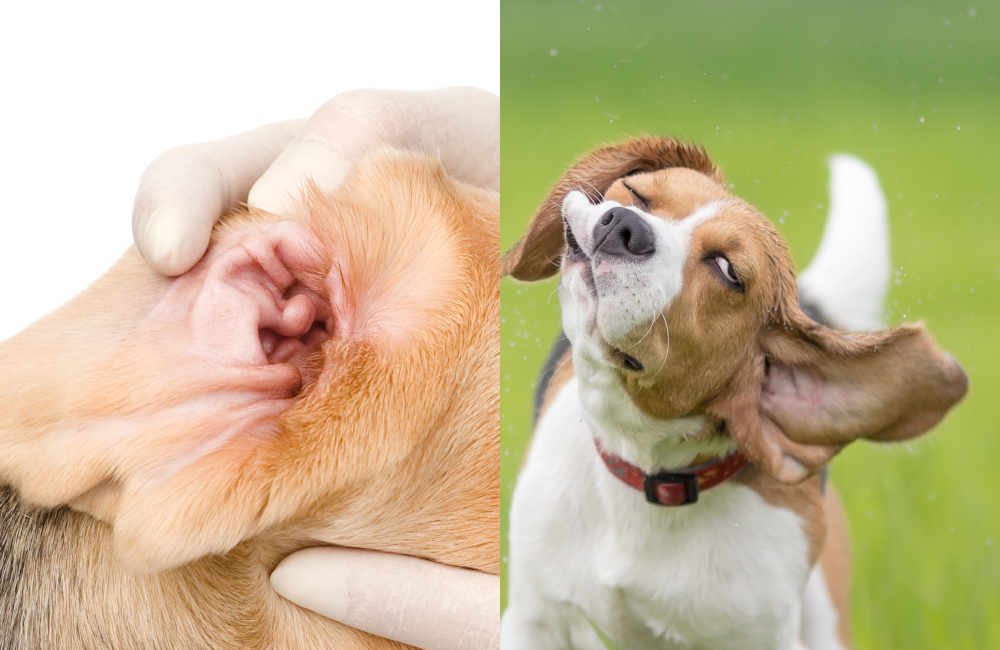
4. Insect sting
One of the most common insect stings is a wasp sting, as dogs are attracted to their buzz and can try to chase them or snap at them. As well as a yelp after they have been stung, you may notice some redness and swelling where the dog was stung.
From home, we should remove any stinger and gently bathe the area with salt water. Mild swelling can be treated with an anti histamine such as Piriton.
Vet attention is needed if your dog has signs of an allergic reaction, such as hives, severe facial swelling or trouble breathing.

5. Broken tooth
A traumatic tooth fracture can occur when a dog is chewing on something hard like a stone, stick or bone. Diseased teeth are more prone to fracturing but we do regularly see tooth fractures in young dogs with healthy teeth.
As well as yelping, dogs may show signs such as drooling and trouble eating. From home, we should offer soft food that is easy to eat. A vet visit will be needed and the fractured tooth may be removed or, if possible, a root canal might be performed. Read our article: Broken Tooth in Dogs? Is It An Emergency?
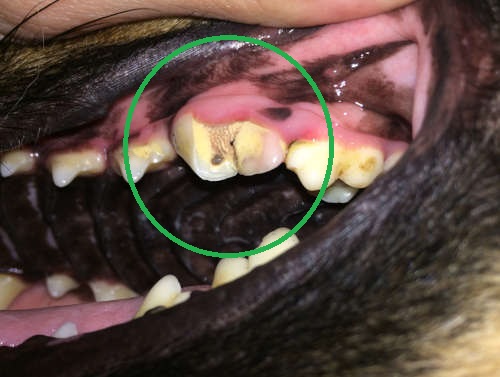
When to seek veterinary care because of yelping
Yelping is confirmation that your dog is in pain. Unless you can resolve the issue from home quickly, your dog will likely need to be seen by their vet. This is not only to determine what exactly the issue is, but also to provide the appropriate treatment and some emergency pain relief to make your dog more comfortable. Signs of pain are not always obvious and can include:
- Hiding away
- Being quiet or distant
- Food refusal
- Panting
- Shaking
- Reluctance to play or go for walks
- Licking at a particular area
Can I use natural pain relief methods to ease my dog’s pain?
Natural pain relief provides limited benefit at times of acute and severe pain. Remedies like turmeric are not going to cut the mustard when your dog is very sore. Rather, we need to seek veterinary attention and use prescription medicine such as NSAIDs and opioids.
Frequently Asked Questions
What should I do if my dog yelps but there are no visible injuries?
Not all injuries are visible and yelping can be a sign of severe pain. If your dog continues to yelp or is not acting as normal, it is important they are seen by their vet.
Can I give my dog pain medication without consulting a vet?
No, this is never a good idea. A vet can help you determine which pain relief is most appropriate and what dose is needed. Giving certain medicine could do more harm than good.
How do I transport my injured dog to the vet safely?
It is usually a good idea to have your dog lie down on a thick duvet while being transported. Smaller dogs can be carrier or sat on your knee.
Can certain dog breeds be more prone to chronic pain?
Any dog can experience chronic pain. Certain breeds are more prone to specific conditions that can cause pain. For example, larger breeds such as the Labrador and German Shepherd are more prone to chronic joint disease. On the other hand, smaller dogs such as the Chihuahua and Pomeranians are more likely to experience advanced dental disease.
Disclaimer: This website's content is not a substitute for veterinary care. Always consult with your veterinarian for healthcare decisions. Read More.


Be the first to comment